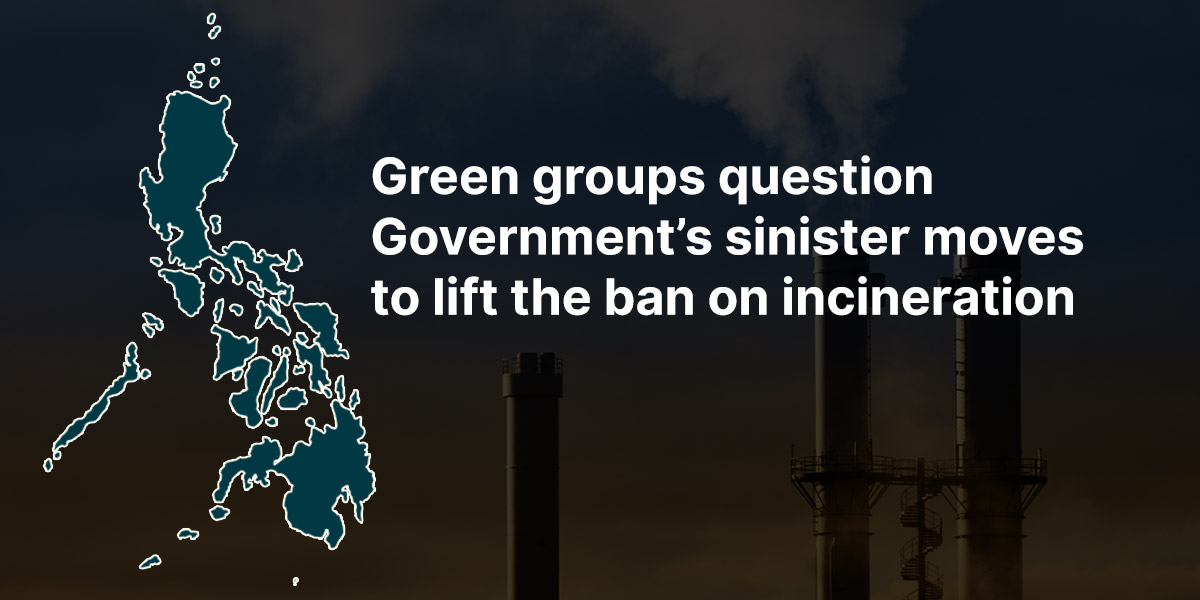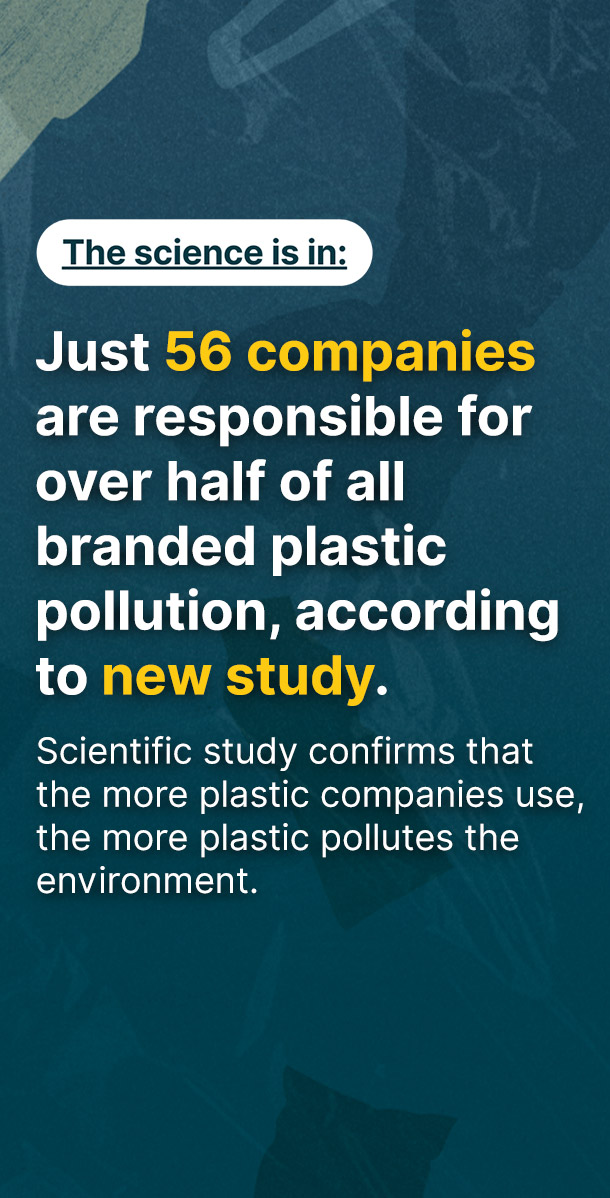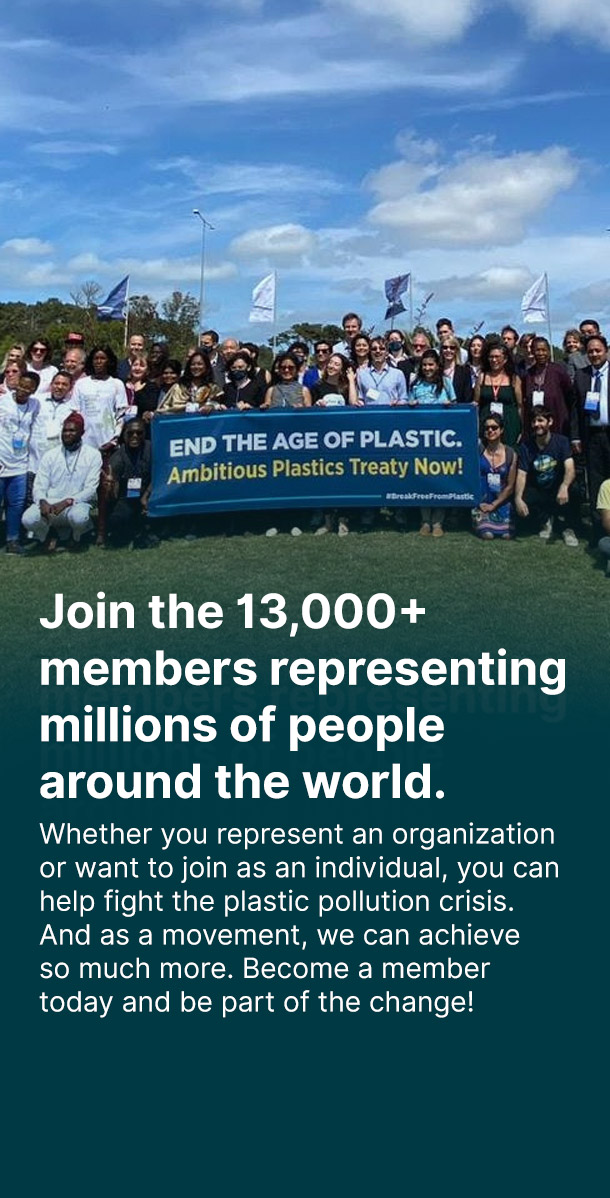(Quezon City, Philippines, December 16, 2019) — Environment groups today lambasted the Philippine government’s moves to lift the anti-incineration provisions of the Clean Air Act and Ecological Solid Waste Management Act. On November 13, the bills amending these laws passed at the committee level in Congress to make way for thermal waste-to-energy facilities, which are essentially still incinerators. Also recently, the Department of Environment and Natural Resources (DENR) issued guidelines for the establishment and operation of waste-to-energy facilities, in violation of the country’s incineration ban.
“The Philippine Clean Air Act and the Ecological Solid Waste Management Act have been praised among environmental circles worldwide for their zero waste vision as well as the anti-incineration provisions. It is unfortunate that it is our government bodies who are mandated to protect the environment and the Filipino people from harm who are the purveyors of these dirty technologies,” said Froilan Grate, Global Alliance for Incinerator Alternatives (GAIA) Philippines Executive Director. “Although there is a complete ban on incineration, it has not deterred the DENR, Department of Interior and Local Government (DILG), and the National Economic Development Authority (NEDA) to push for waste incinerators in the guise of waste-to-energy projects,” Grate added. Currently, there are WtE incinerator proposals in Quezon City, Davao, Cebu, Pampanga, and other provinces in the country, most of them set to be operational by 2020.
Incinerators are facilities used to burn waste using high temperature releasing various types of toxic emissions including lead, mercury, dioxins and furans, particulate matter, carbon monoxide, nitrogen oxides, acidic gases (i.e., SOx, HCl), heavy metals (cadmium, lead, mercury, chromium, arsenic, and beryllium), polychlorinated biphenyls (PCBs), and chlorinated and brominated polycyclic aromatic hydrocarbons (PAHs) in the process. Direct exposure to such toxins risks the health of facility workers and residents in nearby communities while indirect exposure, through the food chain, poses global risks. (1)
Toxic emissions, high costs, and bad history
Contrary to the proposal’s emphasis that there is no high operational costs and environmental risks involved with waste incineration, Merci Ferrer of WOW Dumaguete countered, “what was not mentioned in the bill is that other than the toxic emissions that come from burning waste, there is still the fly ash and bottom ash (FABA) that needs to be handled carefully as toxic waste after burning. The Philippines currently does not have the capacity to this.”
Learning from the experiences of other communities who ended up in debt when they failed to provide the volume of waste for an incinerator to run which is under the “put or pay” contract with incinerator industries, “waste incineration will not solve the country’s waste problem. It will put the country in debt from the private contractors, and worst, open the door to imported waste. In short, we will open our doors to toxic incinerator facilities and the toxic emissions that comes from its use while they (industry) enjoys tax holidays. This is the height of hypocrisy for the government to claim they are solving solid waste problems when they are in fact opening the country to waste importation,” said Beau Baconguis, Asia Coordinator for Break Free From Plastic (BFFP).
The bill will grant waste treatment facilities 7 year tax holiday and 10 year tax and duty exemption on imported capital equipment and vehicles.
“It seems that our leaders have already forgotten the 26 defunct medical waste incinerators that the Philippine and Austrian Governments have entered into in the 90s,” said Ferrer. The 26 medical waste incinerators were decommissioned after it failed to pass emission levels set by the supplier, the Dept. of Health (DoH), and the World Health Organization (WHO). “The Philippines paid US$2 million every year for the incinerators until 2014 even when they were decommissioned as early as 2003 ,” Ferrer added.
(1) https://www.no-burn.org/wp-content/uploads/Pollution-Health_final-Nov-14-2019.pdf
FOR MORE INFORMATION:
Sonia G. Astudillo, Communications Officer, GAIA-AP, +63 917 5969286, sonia@no-burn.org
Jed Alegado, Communications Officer, Break Free From Plastic, +63 917 6070248, jed@breakfreefromplastic.org
Note: The 26 medical waste incinerators were hosted in Albay Provincial Hospital (now Bicol Regional Training and Teaching Hospital), Baguio General Hospital, Batangas Regional Hospital, Bicol Regional Hospital, Cagayan Valley Regional Hospital, Davao Medical Center, Davao Regional Hospital, Dr Paulino Garcia Memorial Hospital, East Avenue Medical Center, Ilocos Regional Hospital (now Ilocos Training and Regional Medical Center), Jose B. Lingad Memorial General Hospital in Pampanga, Mariano Marcos Memorial Hospital and Medical Center in Ilocos, Northern Mindanao Medical Center, Philippine Orthopedic Hospital, Research Institute for Tropical Medicine, Teofilo Sison Memorial Medical Center (now Region I Medical Center) in Pangasinan, Vicente Sotto Sr. Memorial Medical Center in Cebu and Western Visayas Medical Center
To date, the Philippines remains the only country in the world that has a total incineration ban.




